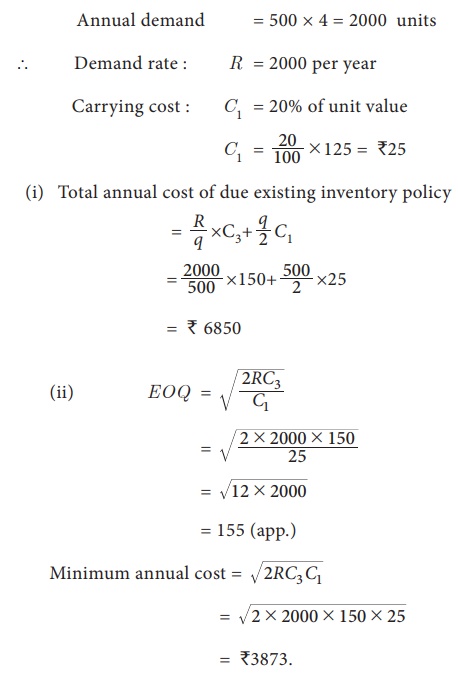
But its applications extend far beyond textbook examples, offering valuable insights for businesses of all sizes and across diverse industries. Let’s delve into the real-world use cases of EOQ, exploring how it empowers informed decision-making in various contexts. The EOQ model was one of the first models to formalize the relationship between ordering and holding costs, and it provided a simple and effective method for lowering ordering and holding costs.

Limitations of Economic Order Quantity (EOQ)
This ensures your inventory levels align with seasonal trends, optimizing efficiency and reducing costs. Monitoring inventory turnover rates can further optimize EOQ, reducing the risk of stale inventory and ensuring that stock levels are aligned with demand. By incorporating EOQ with Just-In-Time (JIT) practices, businesses can synchronize order quantities with production schedules, enhancing supply chain efficiency. The EOQ formula assumes a constant demand rate, which may not reflect real-world buying patterns. Sudden changes in consumer demand, especially during seasonal fluctuations, can complicate inventory management and lead to EOQ miscalculations. Additionally, EOQ can result in substantial cost savings by minimizing total inventory costs through reduced ordering and holding costs.
How confident are you in your long term financial plan?
Economic order quantity helps ensure companies manage their inventories efficiently. By automating EOQ calculations, businesses can ensure they always have enough inventory to meet demand while minimizing excess stock. Businesses should monitor these costs closely and adjust their EOQ calculations to minimize costs and maintain optimal inventory levels.
- To calculate the EOQ for inventory you must know the setup costs, demand rate, and holding costs.
- The total annual requirement divided by the unit production costs will provide some insight on how many units should be ordered at once to avoid excessive ordering costs.
- As your business grows, you may consider implementing an automated inventory management system to keep track of stock levels, inventory costs, and order dates.
- The Economic Order Quantity (EOQ) formula is a cornerstone of efficient inventory management.
What is EOQ calculator?
It is necessary to minimize total inventory costs, and the EOQ concept is ideal in helping to achieve this. By inputting ordering cost, annual quantity demanded, and holding cost, businesses can quickly determine EOQ using predefined formulas. EOQ calculations assume that ordering and holding costs remain constant, which is often not the case in dynamic markets. Costs can change due to various factors, impacting the accuracy of EOQ calculations.
Economic Order Quantity formula
Although Economic Order Quantity is efficient, it can only function in situations where demands are constant. In situations where the demand is not consistent, the Economic Order Quantity (EOQ) will provide a misleading figure. It gives the best results concerning inventory which leads to better and long-lasting patronage.
Product demand can be highly volatile and subject to various external factors, such as changing consumer preferences, market trends, and economic conditions. Short multiple-choice tests, you may evaluate your comprehension of Inventory Management. The ordering cost represents the cost of placing an order for inventory, such as administrative costs and transportation costs. At Business.org, our research is meant to offer general product and service recommendations. We don’t guarantee that our suggestions will work best for each individual or business, so consider your unique needs when choosing products and services. The other thing that the EOQ formula doesn’t take into account is that not all businesses can afford to order economically.
On the other hand, carrying costs, which are variable or semi-variable in nature, tend to change nearly in direct proportion to the level of stock carried in a manufacturing firm. Economic Order Quantity assumes both the ordering and holding costs are constant. Therefore, making it impossible to account for other factors that can affect the ordering and holding costs. Ordering the optimal number of products needed helps the company to keep its costs low and prevent dead stocks.
Maintaining optimal inventory levels frees up working capital for other investments and improves cash flow. However, a disadvantage is the increase in holding costs and risk of stock obsolescence due to the need to store and maintain a larger amount of inventory. Economic order quantity is best used with other inventory management techniques such as reorder point and safety stock. While the EOQ the objective of the economic order quantity is to minimize the total: specifies the lot size of each order, the reorder point is used to determine when an order must be placed for it to be fulfilled on time. Safety stock, however, is the inventory buffer kept just in case for times of unusual demand. While the EOQ calculation model assumes there will be consistent demand for your product, and pricing will remain constant, reality is not usually that simple.